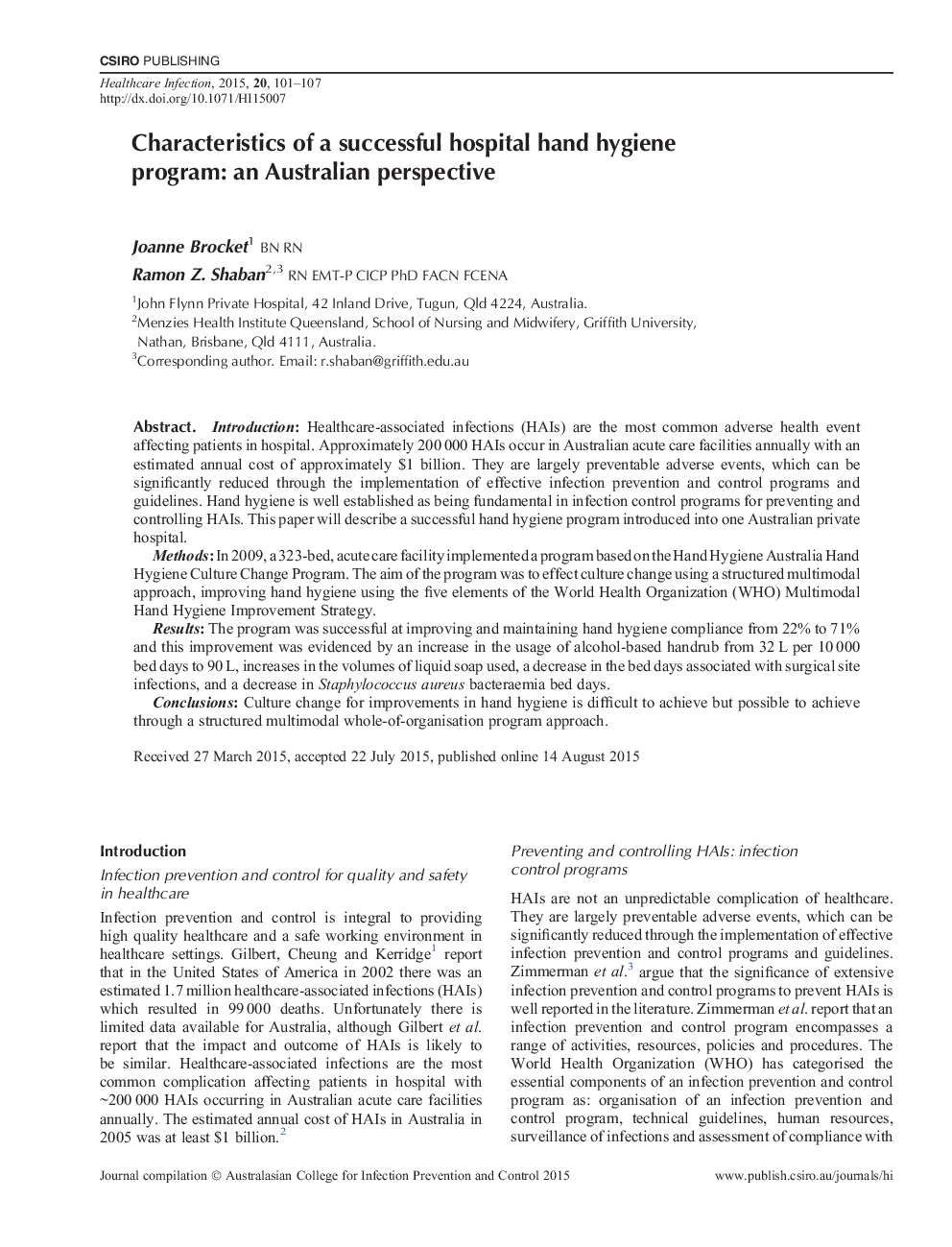| Article ID | Journal | Published Year | Pages | File Type |
|---|---|---|---|---|
| 2679522 | Healthcare infection | 2015 | 7 Pages |
IntroductionHealthcare-associated infections (HAIs) are the most common adverse health event affecting patients in hospital. Approximately 200 000 HAIs occur in Australian acute care facilities annually with an estimated annual cost of approximately $1 billion. They are largely preventable adverse events, which can be significantly reduced through the implementation of effective infection prevention and control programs and guidelines. Hand hygiene is well established as being fundamental in infection control programs for preventing and controlling HAIs. This paper will describe a successful hand hygiene program introduced into one Australian private hospital.MethodsIn2009, a323-bed, acute care facility implemented a program based on the Hand Hygiene Australia Hand Hygiene Culture Change Program. The aim of the program was to effect culture change using a structured multimodal approach, improving hand hygiene using the five elements of the World Health Organization (WHO) Multimodal Hand Hygiene Improvement Strategy.ResultsThe program was successful at improving and maintaining hand hygiene compliance from 22% to 71% and this improvement was evidenced by an increase in the usage of alcohol-based handrub from 32 L per 10 000 bed days to 90 L, increases in the volumes of liquid soap used, a decrease in the bed days associated with surgical site infections, and a decrease in Staphylococcus aureus bacteraemia bed days.ConclusionsCulture change for improvements in hand hygiene is difficult to achieve but possible to achieve through a structured multimodal whole-of-organisation program approach.
